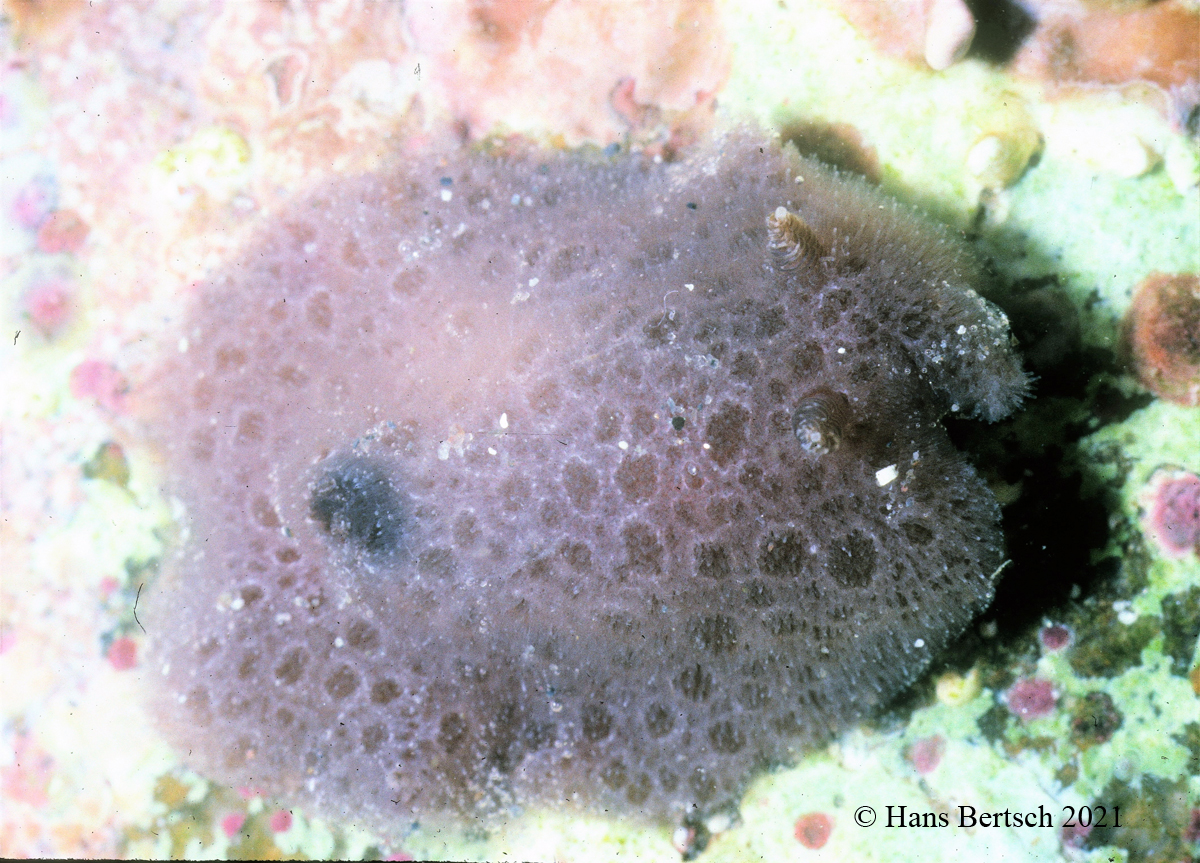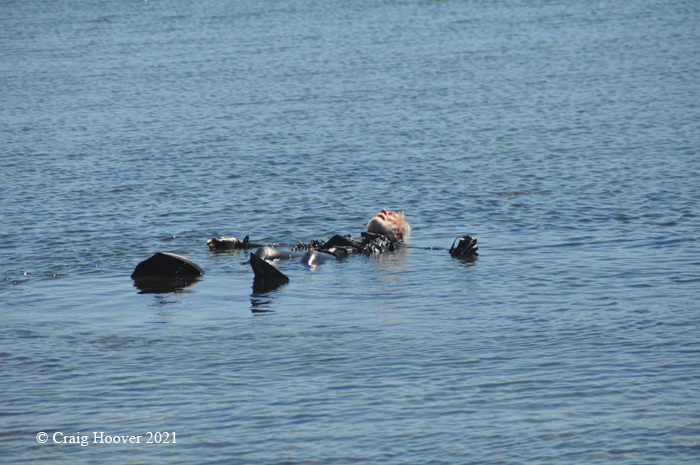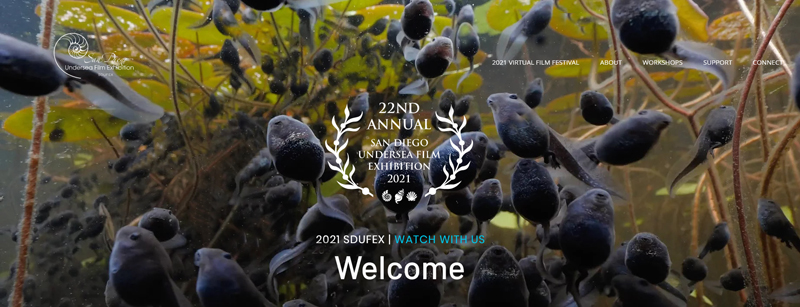 |
.
Jorunna tempisquensis
Photo by Hans Bertsch, 13 March 1992
Punta la Gringa, Bahía de los Ángeles
21 mm animal
Jorunna tempisquensis Camacho-García & Gosliner, 2008
There are three species of Jorunna in the eastern Pacific. Jorunna pardus Behrens & Henderson, 1981, occurs in the Californian faunal province, ranging from the Palos Verdes Peninsula and the Channel Islands (southern California) to Isla Cedros (Baja California). It was named for its “leopard-like spots.” This species was one of the earliest presented as a BOW (Week 36). Jorunna osae Camacho-García & Gosliner, 2008, occurs in the Mexican and Cortezian provinces, ranging from sites in Costa Rica and in the southern (Las Cruces, Baja California Sur) and central (Bahía San Carlos, Sonora, and Bahía de los Ángeles, Baja California) Gulf of California. The species was named in honor of the Osa Conservation Area in Costa Rica, and was featured just last month as a BOW (Week 1211). The third species, Jorunna tempisquensis, is featured here. It too was named for a Conservation Area in Costa Rica.
In describing this species, Camacho-García & Gosliner wrote, “Background colour of living animal light cream, light brown to dark purplish black. In darker specimens, centre of dorsum covering with large, light brown or black spots of different sizes. Dorsum with minute dark brown spots homogeneously arranged, covering tubercles and caryophyllidia. Rhinophores light cream to light brown, speckled with minute dark brown spots. Tips of rhinophores yellowish white. Base of branchial leaves dark brown to almost purple with light yellow tips and some minute brown spots.”
They also comment that “Jorunna tempisquensis can be distinguished from J. osae...by the external coloration, the presence of jaw elements, the absence of mantle glands, by having a spreading rather than erect gill and by differences in radular morphology such as the shape of the innermost teeth.” Probably the absence of mantle glands is the most obvious difference.
Jorunna tempisquensis was originally reported from sites along the Costa Rican coast (between approximately 9º 34' N to 10º 24' N), and from Lindomar, Bahía de Banderas, Jalisco, Mexico (approximately 20º 35' N). The species has been reported (Bertsch, 2014) from Bahía de los Ángeles (opening photo). Since then, I have seen a photo of J. tempisquensis from the La Paz area, in the southern Gulf of California (taken by Universidad Autónoma de Baja California Sur student Christian Daniel Gonzales Nuñez, January 2017). Cassidy Grattan (20 March 2017) photographed a J. tempisquensis under intertidal cobbles just northeast of San Felipe (approximately 31º 02' N). It is now known to occur throughout the length of the Gulf of California, from sites on the Baja California peninsula.
Acknowledgment
I thank Cassidy Grattan of Port Angeles, Washington, for his kind generosity in allowing me to use his great photo.
References
Behrens, David W. & Robert Henderson. 1981. Two new cryptobranch dorid nudibranchs from California. The Veliger 24(2): 120-128.
Bertsch, Hans. 2014. Biodiversity in La Reserva de la Biósfera Bahía de los Ángeles y Canales de Ballenas y Salsipuedes: naming of a new genus, range extensions and new records, and species list of Heterobranchia (Mollusca: Gastropoda), with comments on biodiversity conservation within marine reserves. The Festivus 46(5): 158-177.
Camacho-García, Yolanda E. & Terrence M. Gosliner. 2008. Systematic revision of Jorunna Bergh, 1876 (Nudibranchia: Discodorididae) with a morphological phylogenetic analysis. Journal of Molluscan Studies 74: 143-181.
Dr. Hans Bertsch
Imperial Beach, Calif
Oct., 2021
Send Hans email at hansmarvida@sbcglobal.net
Hans at Cuevitas, Bahía de los Ángeles, March 2018. Photo by Craig Hoover

|

We're virtual again this year, allowing people from all over the world to watch our films. However, it’s definitely not the same as being together in person, and we hope that we’ll be able to host and show the films on the big screen at the state-of-the-art Qualcomm Hall again next year. We've kept this year's event free, but we welcome any contributions towards our work. Our panel of 5 independent judges were tasked with selecting the final films. This year, in addition to all of the chosen films, there’s also a short interview with the top filmmaker. Since we won’t have the opportunity to speak with you during the festival, please tell us what you liked and what could be improved as we go forward. We’d love to hear from you! In the meantime, enjoy the films and stay healthy!
Cheryl H. Dean, President
SDUFEX
Webmaster's Notes:
This was my side line before pandemic hit!
Michael Miller |
